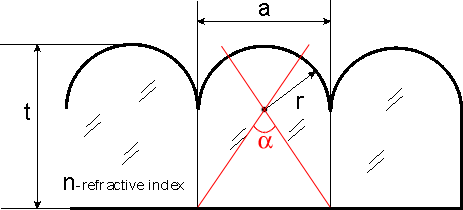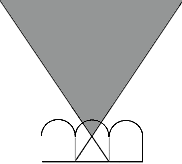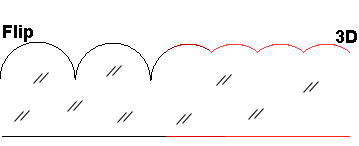How to use the program:
Output image settings (image size, resolution, alignment marks, type, arrangement)
How to use the program:
Lenticular sheet type
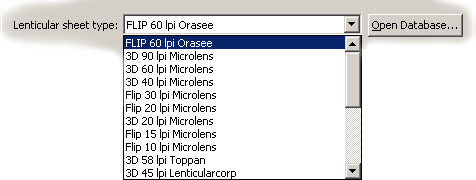
Before the beginning of the work it is necessary to choose the lenticular sheet type. Click Open Database... to open the dialogue Lenticular Sheets Database:
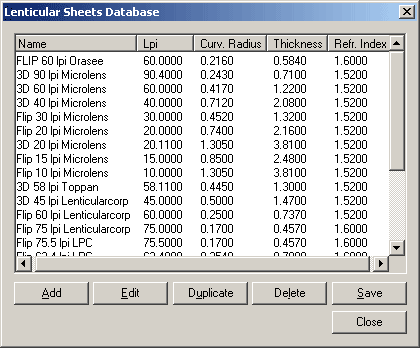
Here you can Add, Edit, Dublicate and Delete the items. Click Save to save your changes into database. Thus you can make Lenticular sheet type database for your goals.
Click Add and Edit to open the Edit dialogue. Here you set the following values:
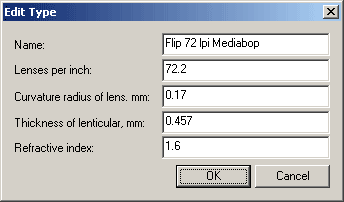
- Lenses per inch - frequency of lenticular sheet or microlens quantity per inch.
Lenses per inch = 25,4 / Period of lenticular in mm
Period of lenticular in mm = 25,4 / Lenses per inch
Frequency of the lenticular sheet is not equal to nominal frequency precisely. This value depend on the printer model and viewing distance. After Pitch test open the necessary item in the database and change the Lenses per inch value, set the correct number. For example, the frequency of a lenticular sheet is equal 72,2 lpi. Write this value in your database and save.
- Curvature radius of lenticular, mm
- Thickness of lenticular, mm
- Refractive index of lenticular - refractive index of substrate, of which the lenses are constructed. The refractive index is between 1,52 and 1,65.
Optical characteristics of lenticular: a - period of lenticular, t - thickness of lenticular, r - curvature radius of lenticular, n - refractive index of lenticular, α - viewing angle of lenticular
Most of lenticular sheets are named as 3D Lenses or Flip Lenses. What it means?
The area of view is V-zone and define the viewing angle of lens - α:
The view area of lenticular sheet
This angle changes from 24 degrees upto 60 degrees. It's impossible to make the usual lenticular sheet with viewing angle more than 60 degrees. (It's limitation of polymer refractive index - 1.6. Maximal viewing angle of crystal lenticular sheet may be 90 degrees. Crystal refractive index is about 2.)
3D Lenses have 24-30 degrees viewing angle. Flip Lenses have 45-60 degrees viewing angle.
3D lenses create more depth stereo image than Flip lenses for the same interlaced image. 3D lenses create the more quick flip image than Flip lenses.
3D Lenses and Flip Lenses have different cross-section profile. Look at figure from below:
3D and Flip lenses
